In the earlier days of the internet it came out to Western audiences that there was a third version of Pokemon, Green Version, in addition to the original Red and Blue. This caused quite a commotion in the community and interest in this mysterious Pokemon Green soared. Many rumours circulated and to this day there remains some confusion amongst fans about Pokemon Green, which was never brought out in English except in name only as the remake Pokemon LeafGreen. Today we're going to put those rumours to rest by getting into a bit of a history lesson. We're also bringing to light the Japanese Pokemon Blue, which differs slightly from any of the games that landed in English-speaking countries.
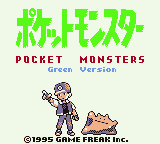
Pokémon Red & Green
In 1996 Pokemon Red and Green were released in Japan and featured the Pokemon Charizard and Venusaur on the covers. Essentially they were the same game as the English Red and Blue, however there are a few differences. Obviously the name and title screen was different for Green, but it was basically what we refer to as Pokemon Blue, with the same version exclusives and the like. Graphically they looked quite different from the English Red and Blue, although some elements can still be seen in these games (the water in the Safari Zone, for instance, looks like the water found in the rest of the game in Red and Green). Most notably are the Pokemon sprites, which had very unusual proportions compared to the art in recent years. These sprites are unique to the Japanese Red and Green and aren't found on any English copy of the game. A few glitches were corrected between the translations, and a difference in coding means they can never connect via Link Cable. The pallet for Pokemon Green on a Game Boy Color was also different, matching the name of the game. Finally, the Unknown Dungeon (or Cerulean Cave) had a different layout that was the basis for the one to return in FireRed, LeafGreen, HeartGold, and SoulSilver.
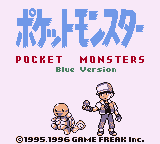
Pokémon Blue
This is where some of the rumours about Pokemon Green are brought to life. In Japan only there was a promotion through Coro Coro magazine allowing players to purchase an improved version of the original Red and Green that had superior graphics and sound, along with a few tweaks in maps. It was the first of what we now call the "third version", starting a trend of improving the original pairs through a new release. It had cosmetic changes, like shifting the spotlight towards Blastoise on the cover and title screen, a different GBC pallet, and changed Nidorino to Jigglypuff in the opening cinematic. The graphics that players of English Red and Blue are accustomed were borrowed off Japanese Blue. Most notably however it had a totally different set of available Pokemon, many of whom were previously only found in Pokemon Red and Green's in-game trades (which have also been changed). Here are those differences catalogued for your convenience
An interesting bit to note is that Pokémon Blue included several Pokémon in the wild that were only found via trades in the original Red & Green and their localised versions.
| No. | Pic | Name | Type | Base Stats | |||||
| HP | Att | Def | Special | Spd | |||||
| #108 |
|
Lickitung ベロリンガ |

| 90 | 55 | 75 | 75 | 30 | |
| #124 |
|
Jynx ルージュラ |
 
| 65 | 50 | 35 | 95 | 95 | |
As expected, Pokémon Blue also has numerous Pokémon that are not available without trading.
| No. | Pic | Name | Type | Base Stats | |||||
| HP | Att | Def | Special | Spd | |||||
| #023 |
|
Ekans アーボ |

| 35 | 60 | 44 | 40 | 55 | |
| #024 |
|
Arbok アーボック |

| 60 | 85 | 69 | 65 | 80 | |
| #037 |
|
Vulpix ロコン |

| 38 | 41 | 40 | 65 | 65 | |
| #038 |
|
Ninetales キュウコン |

| 73 | 76 | 75 | 100 | 100 | |
| #056 |
|
Mankey マンキー |

| 40 | 80 | 35 | 35 | 70 | |
| #057 |
|
Primeape オコリザル |

| 65 | 105 | 60 | 60 | 95 | |
| #069 |
|
Bellsprout マダツボミ |
 
| 50 | 75 | 35 | 70 | 40 | |
| #070 |
|
Weepinbell ウツドン |
 
| 65 | 90 | 50 | 85 | 55 | |
| #071 |
|
Victreebel ウツボット |
 
| 80 | 105 | 65 | 100 | 70 | |
| #125 |
|
Electabuzz エレブー |

| 65 | 83 | 57 | 85 | 105 | |
| #126 |
|
Magmar ブーバー |

| 65 | 95 | 57 | 85 | 93 | |
Like the other games, Pokémon Blue has the various in-game trades. These were the models for the ones in Red & Blue, but with the Pokémon matching those from Red & Green. As such, the text from the original exists which is why one in the English Red & Blue references Raichu evolving, since they use Graveler in the trade here.
| Route 2: Mr. Mime | ||||||||||||||||||||
Location: Route 2 Method:
|
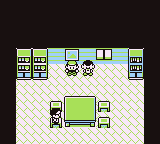 |
|||||||||||||||||||
| Route 5: Poliwag | ||||||||||||||||||||
Location: Route 5 Method:
|
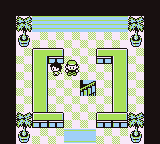 |
|||||||||||||||||||
| Route 11: Kangaskhan | ||||||||||||||||||||
Location: Route 11 Method:
|
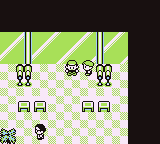 |
|||||||||||||||||||
| Route 18: Tauros | ||||||||||||||||||||
Location: Route 18 Method:
|
 |
|||||||||||||||||||
| Cerulean City: Haunter/Gengar | ||||||||||||||||||||
Location: Cerulean City Method:
|
 |
|||||||||||||||||||
| Vermillion City: Farfetch'd | ||||||||||||||||||||
Location: Vermillion Method:
|
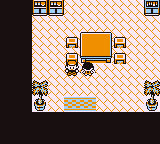 |
|||||||||||||||||||
| Cinnabar Island: Slowpoke | ||||||||||||||||||||
Location: Cinnabar Island Method:
|
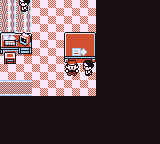 |
|||||||||||||||||||
| Cinnabar Island: Graveler | ||||||||||||||||||||
Location: Cinnabar Island Method:
|
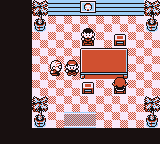 |
|||||||||||||||||||
| Cinnabar Island: Krabby | ||||||||||||||||||||
Location: Cinnabar Island Method:
|
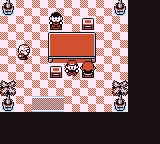 |
|||||||||||||||||||
